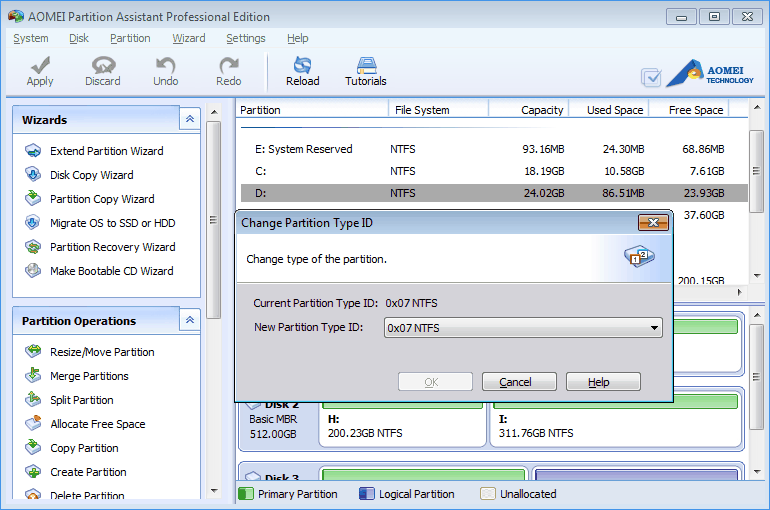
- #EXT2 VOLUME MANAGER DISAPPEAR SERIAL#
- #EXT2 VOLUME MANAGER DISAPPEAR MANUAL#
- #EXT2 VOLUME MANAGER DISAPPEAR OFFLINE#
The nofail option helps make sure that the VM starts even if the file system is corrupted or the file system doesn't exist at startup.For more information about the syntax, run the man blkid command. To determine the UUID of the file system, run the blkid command.For example, run the following command: /dev/sdc1: LABEL="cloudimg-rootfs" UUID="" TYPE="ext4" PARTUUID="" We recommend that you mount data disks on Azure VMs by using the UUID of the file system partition.You can later uncomment any commented lines. However, the VM should start without the additional partitions. The VM may experience application errors about additional commented partitions. For the VM to recover and start, the file system partitions should be the only required partitions.We recommend that you comment fstab lines that you're unsure about instead of removing the lines. Commented lines can remain in the fstab file, but they won't be processed. Lines that have a number sign (#) as the first character are comments. Fields on each line are separated by tabs or spaces.To troubleshoot a start failure, review each line to make sure that it's correct in both structure and content. For more information about the syntax of the fstab file, run the man fstab command.

Each line in the fstab file indicates a file system that is mounted when the VM starts. Use your favorite text editor to open the fstab file. Once the vm has booted into single user mode.
#EXT2 VOLUME MANAGER DISAPPEAR SERIAL#
Use serial console to take single user mode single user mode Use the serial console Using Single User Mode
#EXT2 VOLUME MANAGER DISAPPEAR OFFLINE#
If the serial console isn't enabled on your VM, go to the Repair the VM offline section. Then use the tool to repair the file system. To resolve this problem, start the VM in emergency mode by using the serial console for Azure Virtual Machines. This problem may occur if the file systems table (fstab) syntax is incorrect or if a required data disk that is mapped to an entry in the "/etc/fstab" file is not attached to the VM. *** Disabling security enforcement for system recovery. *** Dropping you to a shell the system will reboot *** An error occurred during the file system check.

#EXT2 VOLUME MANAGER DISAPPEAR MANUAL#
fsck.ext3 -a /dev/sde1 fsck.ext3: No such file or directory while trying to open /dev/sde1Įxample 3: A VM cannot start because of an fstab misconfiguration or because the disk is no longer attached The disk drive for /var/lib/mysql is not ready yet or not present.Ĭontinue to wait, or Press S to skip mounting or M for manual recoveryĮxample 4: A serial log entry shows an incorrect UUID Checking filesystems Is corrupt, and you might try running e2fsck with an alternate superblock:

If the device is valid and it really contains an ext2įilesystem (and not swap or ufs or something else), then the superblock The superblock could not be read or does not describe a correct ext2įilesystem. sck.ext3 -a /dev/sdc1įsck.ext3: No such file or directory while trying to open /dev/sdc1 dev/sde1: nonexistent device ("nofail" fstab option may be used to skip this device) dev/sdd1: nonexistent device ("nofail" fstab option may be used to skip this device) dev/sdc1: nonexistent device ("nofail" fstab option may be used to skip this device) Welcome to emergency mode! After logging in, type "journalctl -xb" to viewsystem logs, "systemctl reboot" to reboot, "systemctl default" to try again to boot into default mode.Įxample 2: An unattached device is missing on CentOS Checking file systems… Dependency failed for Local File Systems. Example 1: A disk is mounted by the SCSI ID instead of the universally unique identifier (UUID) Timed out waiting for device vice.

The following are examples of possible errors. When you run the Boot Diagnostics feature on the Azure portal, you see log entries that resemble the following examples: Examples You can't connect to an Azure Linux Virtual Machine (VM) by using a Secure Shell (SSH) connection.


 0 kommentar(er)
0 kommentar(er)
